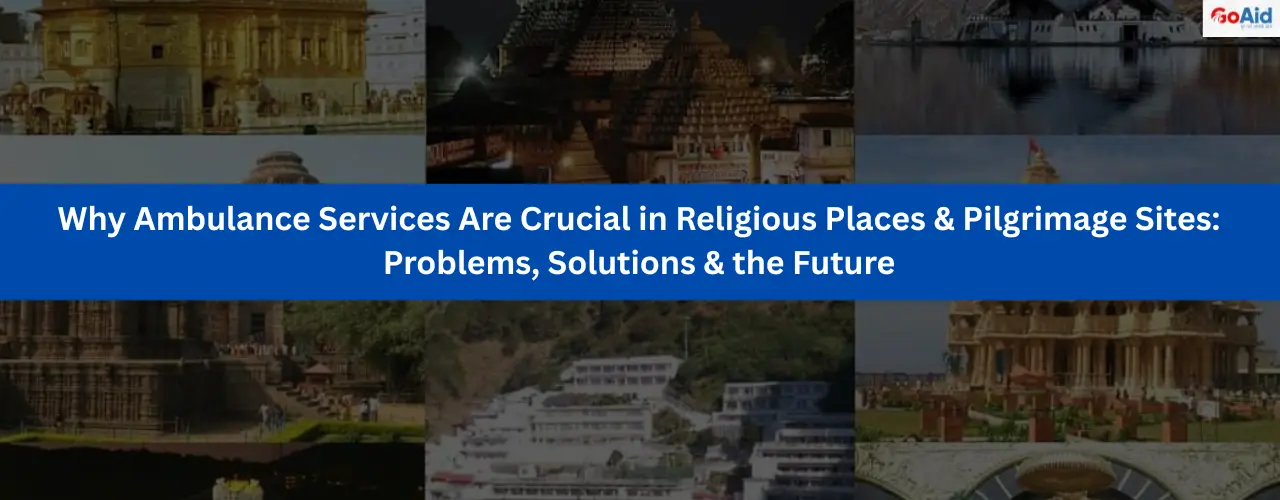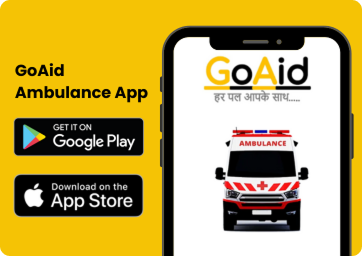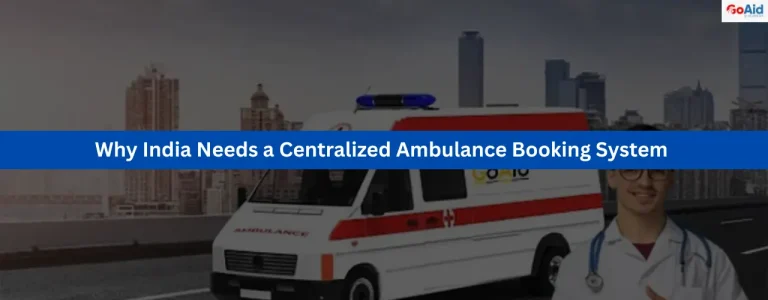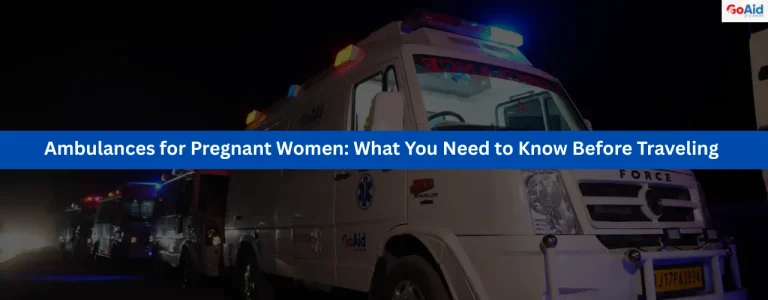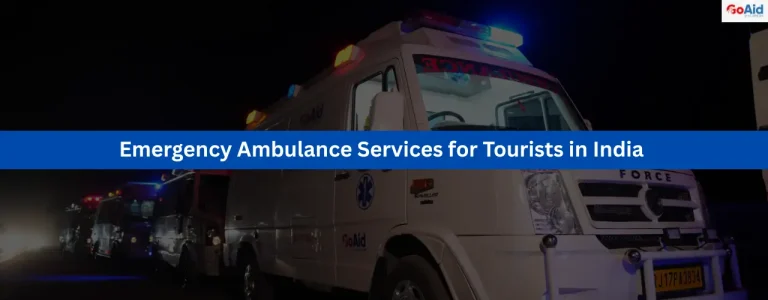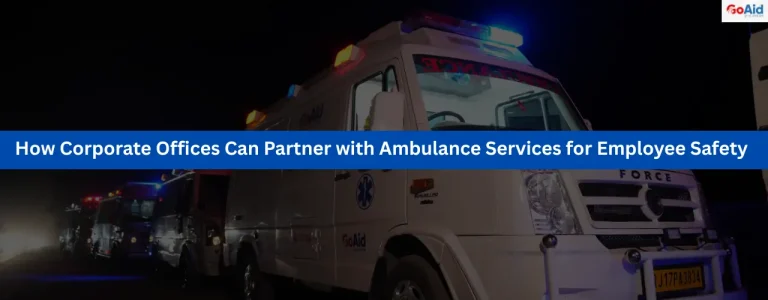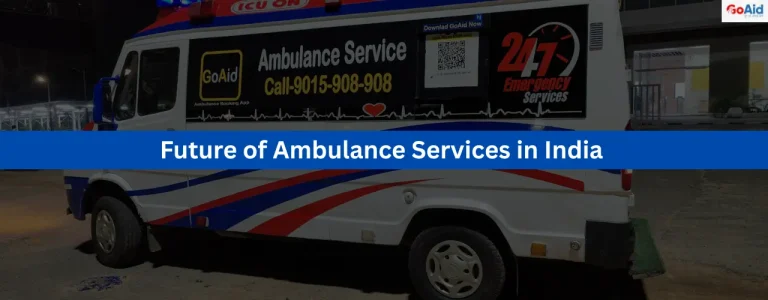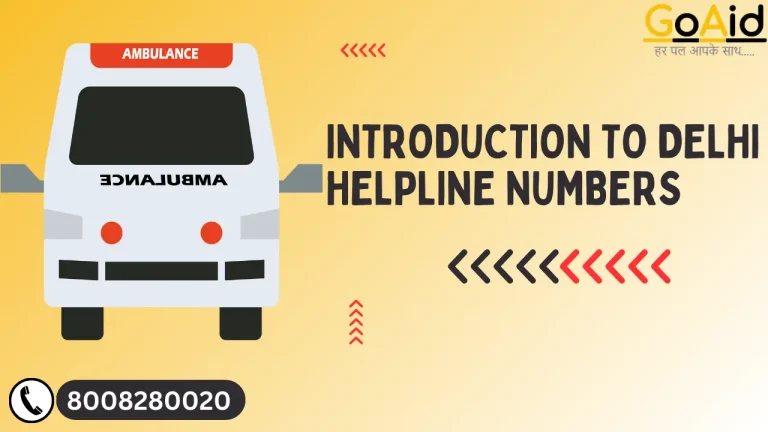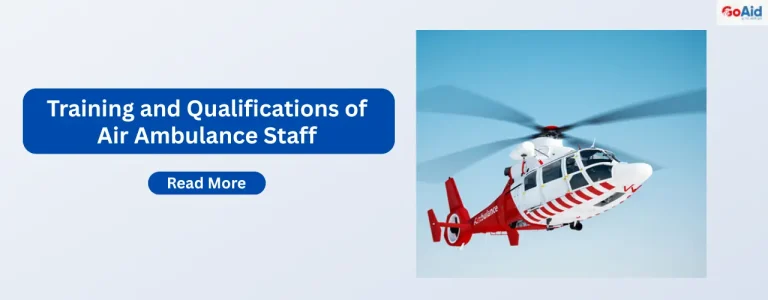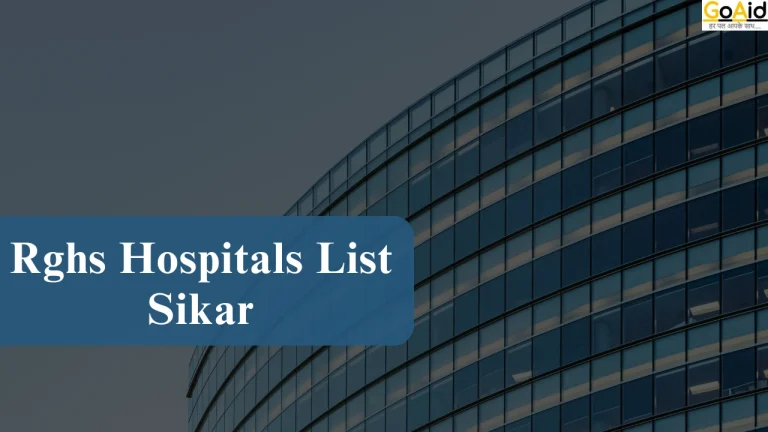In India, religious places and pilgrimage often witness large gatherings and religious events. People come to visit these places around the world. Sometimes, due to extreme weather conditions and the large number of people, there is a chance of medical complications in these places. ThatŌĆÖs why it is important to have access to a fast and reliable ambulance service. Ambulance services provide medical assistance and help needy people during medical emergencies.
This blog provides you the important information about Why Ambulance Services Are Essential for Religious Places & Pilgrimage Sites, their current challenges, and legal obligations. Are you interested in reading about it? If yes, then you donŌĆÖt need to wait any longer
LetŌĆÖs start reading
Common Health & Safety Problems at Religious Places & Pilgrimage Sites
In India, large crowds, physical exhaustion, heat, and poor infrastructure often turn holy visits into medical emergencies. These health and safety issues highlight the urgent need for dependable emergency care in religious places & pilgrimage sites.
- Dehydration & Heatstroke: Pilgrimage sites in hot regions often lead to heat exhaustion or dehydration. A prompt on-site ambulance service ensures the affected person receives cooling and hydration treatment without delay.
- Stampedes or Crowd-Related Injuries: During festivals or crowded days, stampedes can occur, causing serious injuries. A dedicated ambulance at religious places & pilgrimage sites allows for swift evacuation and first aid.
- Cardiac Emergencies: The emotional and physical stress of rituals and long walks may trigger heart attacks. A fast emergency response in religious places can prevent fatalities when ambulances are nearby.
- Injury from Slips or Falls: Wet floors, slippery stairs, or uneven terrain can cause slips and fractures. Having a religious place injury ambulance available allows timely support and transportation.
- Exhaustion from Long Treks: Some pilgrimage routes involve steep climbs and long hours of walking, leading to extreme fatigue or collapse. An ambulance for pilgrims’ safety provides essential recovery care.
- Medical Conditions Worsening During Rituals: Ritual fasting or standing for long durations may worsen existing medical conditions. Immediate first aid in religious places & pilgrimage sites ensures conditions are stabilized on location.
Why Ambulance Services Are Essential for Religious Places & Pilgrimage Sites?
The prompt medical attention in sacred spaces is not a luxury but a necessity. The presence of ambulance services for religious places & pilgrimage sites can make the difference between life and death in time-sensitive emergencies.
- Immediate Response During Mass Gatherings: Massive crowds slow down general movement. An on-site ambulance service ensures patients are attended to immediately, avoiding delay in care.
- Support for Elderly Pilgrims: Senior citizens are at high risk of collapse or sudden illness. A dedicated ambulance for pilgrimage safety ensures quick medical support without panic.
- Mobile Medical Unit for Remote Sites: Many religious places are located in hills or remote villages. A fully-equipped religious places & pilgrimage sites ambulance service serves as a mobile hospital where help is otherwise far.
- Safe Transport to Nearby Hospitals: For injuries or critical cases, quick and safe transport to a hospital is vital. Ambulance teams ensure that medical emergencies at religious places are transferred fast and safely.
- On-the-spot First Aid & Stabilization: A well-equipped ambulance with trained paramedics can offer immediate first aid at religious places, which may be life-saving before hospital admission.
- Preparedness for Festivals and Events: During special occasions and yatras, medical emergencies rise. Having a diverse ambulance fleet on standby improves overall religious places & pilgrimage sites.
Types of Ambulance Services Might be Required in Religious Places & Pilgrimage Sites
In India, religious events and pilgrimages involve varied medical risks, from basic injuries to critical emergencies. To ensure complete emergency response in religious places & pilgrimage sites, different types of ambulances are essential based on the scale and nature of the gathering.
- Basic Life Support (BLS) Ambulance: For minor injuries, fainting, or simple transport needs, BLS ambulances for religious places & pilgrimage sites provide essential care with basic equipment and trained staff.
- Advanced Life Support (ALS) Ambulance: When critical emergencies like cardiac arrest occur, ALS ambulances in pilgrimage sites offer advanced monitoring systems and life-saving interventions on the move.
- ICU Ventilator Ambulance: For patients requiring continuous intensive care, especially in remote locations, an ICU ambulance for religious places ensures survival with ventilator support and critical care equipment.
- Dead Body Mortuary Van: In unfortunate events of death during pilgrimages, a mortuary ambulance for religious places allows dignified and secure body transport without disturbing others at the site.
- Freezer Box Ambulance: If transport of deceased individuals over long distances is needed, freezer box ambulance services in pilgrimage sites are crucial for preservation and respectful handling.
- Event Ambulance for Mass Gatherings: Large spiritual events require dedicated on-site ambulance service with standby teams, first-aid stations, and multiple vehicles for immediate action.
Know More: Difference between BLS Ambulance and ALS Ambulance
Current Challenges in Providing Ambulance Services to Religious Places & Pilgrimage Sites
In India, despite the need, several roadblocks prevent effective religious places & pilgrimage sites ambulance service. These challenges reduce the efficiency and reach of emergency medical aid where itŌĆÖs needed the most.
- Poor Infrastructure in Remote Areas: Many pilgrimage spots are located in hilly or underdeveloped regions where road access is limited, affecting emergency response at religious places.
- Lack of Awareness: Event organizers often neglect ambulance services for religious places & pilgrimage sites, assuming basic health stalls are sufficient for emergencies.
- Overcrowding During Festivals: Massive crowds block movement, delaying ambulances for religious places from reaching the patient on time during peak pilgrim seasons.
- Insufficient Trained Medical Staff: Many religious locations do not have enough trained EMTs or paramedics, which weakens the on-site ambulance service quality and speed.
- Limited Availability of Specialized Ambulances: In emergencies requiring ventilator or ALS support, the lack of a diverse ambulance fleet impacts proper care for critical patients.
- No Coordination With Local Hospitals: Absence of systems connecting ambulance services at pilgrimage sites with hospitals causes delays in admission, diagnosis, and treatment.
How Can These Problems Be Solved?
In India, to strengthen emergency care in religious places & pilgrimage sites, a dedicated plan with trained personnel, technology, and availability of ambulances is the key to solving these urgent issues.
Deploy Dedicated Ambulances at High-Volume Sites: Permanent on-site ambulance services should be stationed at famous pilgrimage spots to enable instant medical attention for common emergencies.
Strengthen Road Connectivity & Access Routes: Governments and local bodies must prioritize roads and access lanes for ambulances to reach religious places & pilgrimage sites, especially in remote areas.
Collaborate with Emergency Service Providers: Tying up with private services like GoAid can ensure 24/7 ambulance service in religious places, even during sudden health crises or large events.
Train Volunteers & Temple Staff in First Aid: On-ground responders trained in CPR and first aid can assist until religious places’ ambulance services arrive, minimizing delays in care.
Use GPS & Technology for Dispatch & Coordination: Modern tools help track real-time ambulance movement, making emergency response in pilgrimage sites more organized and swift.
Introduce Mandatory Health & Safety Protocols for Events: Regulatory bodies should mandate ambulance service at religious events to improve medical preparedness and prevent large-scale disasters.
Future of Emergency Medical Services in Religious Places & Pilgrimage Sites
The future of emergency medical services in religious places & pilgrimage sites is becoming increasingly tech-driven, responsive, and preventive. Integration of smart ambulances equipped with GPS tracking, AI-based dispatch systems, and telemedicine will allow instant connectivity between pilgrims and hospitals, even in remote or high-altitude areas.
In the coming years, more religious sites will prioritize setting up on-site ambulance services with trained paramedics, first-aid zones, and rapid triage units. Government mandates, CSR involvement, and public-private partnerships will further enable ambulance services for religious places & pilgrimage sites to evolve into fully operational health hubs capable of managing large-scale medical emergencies effectively.
Legal Obligation for On-Site Ambulances for Religious Places & Pilgrimage Sites in India
The legal frameworks and public safety norms increasingly stress the importance of ambulance services for religious places & pilgrimage sites to protect public health during mass gatherings.
- The Disaster Management Act emphasizes pre-event planning and healthcare deployment, supporting the need for on-site ambulance services at religious sites.
- State governments issue health safety mandates during major festivals and yatras, making ambulances at religious places & pilgrimage sites compulsory in some areas.
- Public Liability Insurance Act can hold authorities responsible if no emergency care in religious places is available and injuries occur.
- The National Disaster Response Framework encourages NGOs and private players to offer ambulances for pilgrimage safety during religious events and mass movements.
- Legal provisions under the IPC Section 304A (negligence) may apply if a lack of religious places ambulance service causes avoidable deaths.
- Municipal and temple boards are now including ambulance service requirements in event permissions, setting a precedent for future policy alignment.
How Can GoAid Be Used as a Reliable Partner for Religious Places & Pilgrimage Sites?
GoAid stands out as a trusted emergency care provider offering timely, affordable, and efficient ambulance services for religious places & pilgrimage sites. With experience, advanced fleet, and nationwide coverage, GoAid ensures safe pilgrimages for millions.
- Quick 10-Minute Response Time: GoAid ensures ambulances reach within 10 minutes, making it ideal for high-footfall religious places & pilgrimage sites emergency care.
- Diverse Ambulance Types: From BLS, ALS, and ICU to Freezer Box and Mortuary Vans, GoAid covers all needs for pilgrimage and temple ambulance services.
- 24/7 Availability: GoAid operates round-the-clock, ensuring pilgrims get help any time of day, especially during festivals or night-time events.
- Multiple Booking Options: Ambulances can be booked via app, website, or by calling 8008280020, making it convenient for organizers and visitors.
- Experienced Paramedics: GoAid provides well-trained medical professionals and sensible ambulance helpers to handle all types of medical emergencies.
- Custom Solutions for Events: GoAid offers ambulance services for events. Whether itŌĆÖs a small shrine or a large yatra, GoAid offers custom ambulance setups based on crowd and geography.
- Government-Approved Affordable Rates: GoAid prices are budget-friendly, making it one of the most affordable ambulance services in India.
- Nationwide Service Coverage: From temples in North India to pilgrimage centres in the South, GoAid offers ambulance services across India.
- Smart Ambulances with GPS: Vehicles are equipped with GPS and medical tracking, ensuring fast navigation and coordination during emergencies.
- CSR-Friendly Support: GoAidŌĆÖs free ambulance for pregnant women initiative and affordable solutions make it ideal for NGO or trust-based religious setups.
Case Studies/Examples
- Adani Group partnered with GoAid to deploy on-site ambulances during a large-scale religious event held near one of their development zones. The challenge included managing over 25,000 pilgrims in a remote area. GoAid provided BLS and ICU ambulances, GPS tracking, and trained staff. The religious places & pilgrimage sites ambulance service helped reduce emergency response time to under 8 minutes and successfully stabilized over 100 individuals needing urgent care.
- Knight Frank collaborated with GoAid during a high-traffic pilgrimage near their commercial project in Maharashtra. Anticipating medical emergencies due to heat and exhaustion, they arranged on-site ambulance services including first-aid booths, paramedic teams, and ALS vehicles. The project not only fulfilled legal obligations for emergency services in pilgrimage sites but also enhanced community trust and safety.
Conclusion to the Need for Ambulance Services in Religious Places & Pilgrimage Sites
Ambulance services for religious places & pilgrimage sites are no longer optional; they are essential. From managing crowd-related injuries to providing advanced life support in remote temples, timely medical intervention saves lives and ensures public health security. As more people seek spiritual journeys, safety cannot be compromised.
GoAid has emerged as a key player in bridging this gap through technology-driven, fast-response, and affordable on-site ambulance services. As the future of religious tourism evolves, integrating dependable emergency care will be critical to maintaining faith, not just in divine places, but in human systems of care too.
Call-to-Action (CTA)
Partner with GoAid today for reliable, 24/7 ambulance services for religious places & pilgrimage sites. Ensure every devotee’s journey is safeŌĆöcall us at 8008280020 or book via the GoAid app.
FAQs on the Need for Ambulance Services in Religious Places & Pilgrimage Sites
Question-1: Why are ambulances needed at Religious Places & Pilgrimage Sites?
Answer: Due to large crowds, physical exertion, and limited medical facilities, emergencies can occur. Ambulances ensure quick treatment and safe transport.
Question 2: What types of injuries are common in the Religious Places & Pilgrimage Sites?
Answer: Common injuries include heatstroke, fainting, heart attacks, stampede injuries, and falls on uneven surfaces.
Question-3: Is it mandatory to have ambulance services at Religious Places & Pilgrimage Sites in India?
Answer: While not always legally mandated, many states require on-site ambulance services during major events or festivals.
Question-4: Can private companies provide ambulance services to Religious Places & Pilgrimage Sites?
Answer: Yes, certified private providers like GoAid offer professional religious places ambulance services with trained staff and equipment.
Question 5: What is an on-site ambulance service?
Answer: It refers to ambulances stationed directly at the location, ensuring immediate emergency response in religious places & pilgrimage sites.
Question 6: How does an ambulance service improve pilgrims’ safety at Religious Places & Pilgrimage Sites?
Answer: Ambulances provide instant medical aid, safe transport, and peace of mind to pilgrims and organizers alike.
Question 7: Can ambulance services be customized based on the size of the Religious Places & Pilgrimage Sites?
Answer: Yes, providers offer tailored plans including several vehicles, staff, and equipment based on site size and expected footfall.
Question 8: Are there any legal obligations for emergency medical support at Religious Places & Pilgrimage Sites?
Answer: Local governments often mandate emergency care support under safety and disaster management guidelines.
Question-9: How much does it cost to hire an ambulance service for Religious Places & Pilgrimage Sites?
Answer: Costs vary, but GoAid offers affordable ambulance services at government-approved rates for religious locations.
Question 10: Do ambulance providers offer trained paramedics along with the vehicle?
Answer: Yes, GoAid and other top providers ensure qualified paramedics and sensible helpers are on board.
Question-11: Can ambulances be equipped with trauma kits for Religious Places & Pilgrimage Sites-related injuries?
Answer: Absolutely. Ambulances for religious events can carry trauma kits, defibrillators, oxygen, and advanced support equipment.
Question 12: How fast can an on-site ambulance respond compared to city emergency services?
Answer: On-site ambulances respond within 5ŌĆō10 minutes, much faster than regular city emergency dispatch.
Question 13: How does having an ambulance affect insurance and liability claims?
Answer: It shows preparedness, often lowering liability risks and aiding in smoother insurance processing.
Question-14: Is a 24/7 ambulance service necessary for Religious Places & Pilgrimage Sites?
Answer: Yes, continuous ambulance services in pilgrimage sites are critical as emergencies can happen anytime, even at night.

